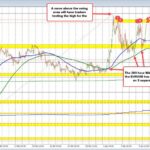Historic S&P 500 Rally: How a Tariff Pause Sparked a Market Surge
Tháng 4 10, 2025
EUR/USD April 2025: Technical Insights and Market Movers
Tháng 4 10, 2025The Influence of the Bond Market on Tariff Decisions: Insights from Kevin Hassett
In a recent discussion, Kevin Hassett, Director of the White House National Economic Council, hinted at the potential influence of the bond market on the U.S. government’s decision to impose tariffs. While specific details remain scarce, the implications of such a relationship between bond markets and trade policy merit further exploration. With ongoing discussions surrounding tariffs and international trade dynamics, understanding how market trends affect economic strategies is crucial for American businesses and consumers alike.
Tariff Policy and Market Reaction
President Trump’s announcement of tariffs on a broad range of trading partners—imposing a universal 10% tariff and higher rates for select countries—has led to significant market volatility. This policy shift has resulted in declines in global stock indices and prompted retaliatory measures from affected nations. Market participants responded rapidly, recognizing the potential for trade wars and the consequent economic ramifications. The turbulence in the financial markets signals a heightened sensitivity to economic policies, especially those that could alter the balance of international trade.
Hassett maintains that tariffs serve as a vital tool to bolster American producers and tackle the persistent issue of trade deficits. His assertion that other countries would absorb a significant share of the tariffs appears aimed at alleviating concerns regarding inflationary pressures on U.S. consumers. The trade-off between enhanced domestic competitiveness and the potential for higher prices remains a pivotal topic of discussion among economists and policymakers. For instance, the recent analysis in “Top 5 Midday Stock Movers” highlights how stocks react to these types of market changes.
Negotiations and Prioritization of Trade Talks
With the backdrop of increased tariffs, over 50 countries have signaled a willingness to negotiate with the U.S. on trade terms. Hassett emphasized that the Trump administration prioritizes dialogues with key trading partners contributing to America’s trade deficits. This strategic approach seeks to realign trade relationships in favor of U.S. interests and underscores the administration’s commitment to addressing some of the most pressing issues in international commerce.
Such negotiations are particularly relevant as the administration maneuvers through the complexities of global trade dynamics. The interplay between tariffs and trade negotiations represents a crucial balancing act, one that necessitates careful consideration of market conditions evaluated in tandem with economic indicators, including those from the bond market. Recent stock movements, such as those covered in “Top Stock Movements: Rocket Lab, Lululemon, Applovin”, exemplify how market responses can reflect broader trade discussions.
The Role of the Bond Market in Economic Policy
Although Hassett’s comments on the bond market’s influence have not been deeply elaborated, it is well established that economic indicators play a pivotal role in shaping tariff policy. The bond market, often seen as a barometer of economic health, reacts not just to fiscal decisions but also to the anticipated outcomes of those policies. Underlying market conditions can affect government strategy, particularly in the context of tariffs that aim to correct perceived trade imbalances.
Amidst rumors of a potential 90-day pause on tariffs for most countries (excluding China), which were later debunked before reversing course, it is clear that market sentiment has a tangible impact on policy decisions. As the administration evaluates economic signals, the influence of bond market dynamics should not be overlooked. An interesting discussion on this topic can be found in “Three Strategic Moves by China’s Xi”, which outlines the geopolitical context of trade tensions.
Conclusion
As discussions around trade policy and tariffs intensify, the insights shared by Kevin Hassett signal the importance of understanding the multifaceted relationships between fiscal decisions and market conditions. While the direct connection between the bond market and tariffs requires further elucidation, it is evident that businesses, consumers, and policymakers must stay abreast of the evolving economic landscape. Investing in a nuanced understanding of these connections can better prepare stakeholders for the challenges and opportunities that lie ahead in a complex global economy.
